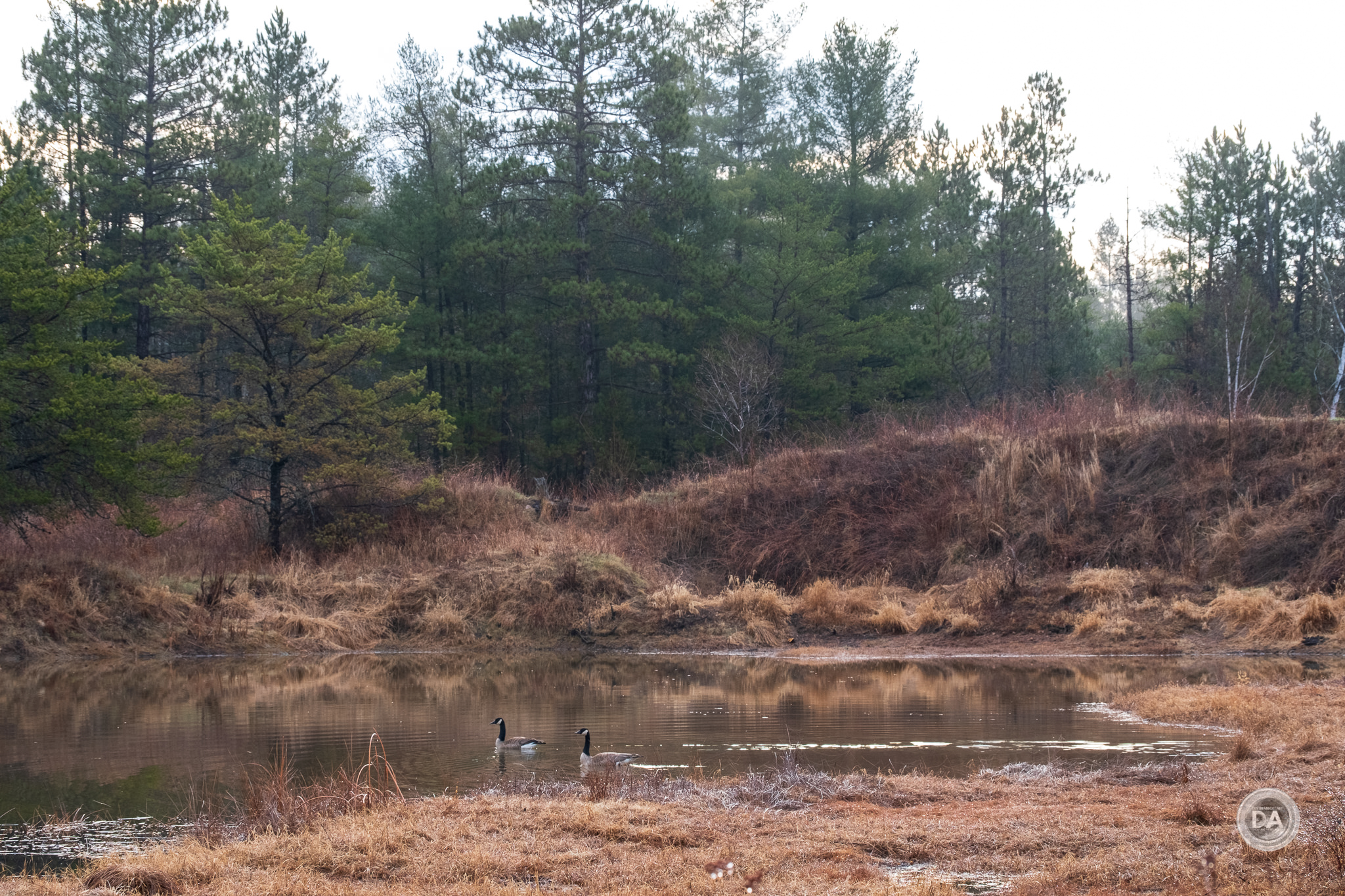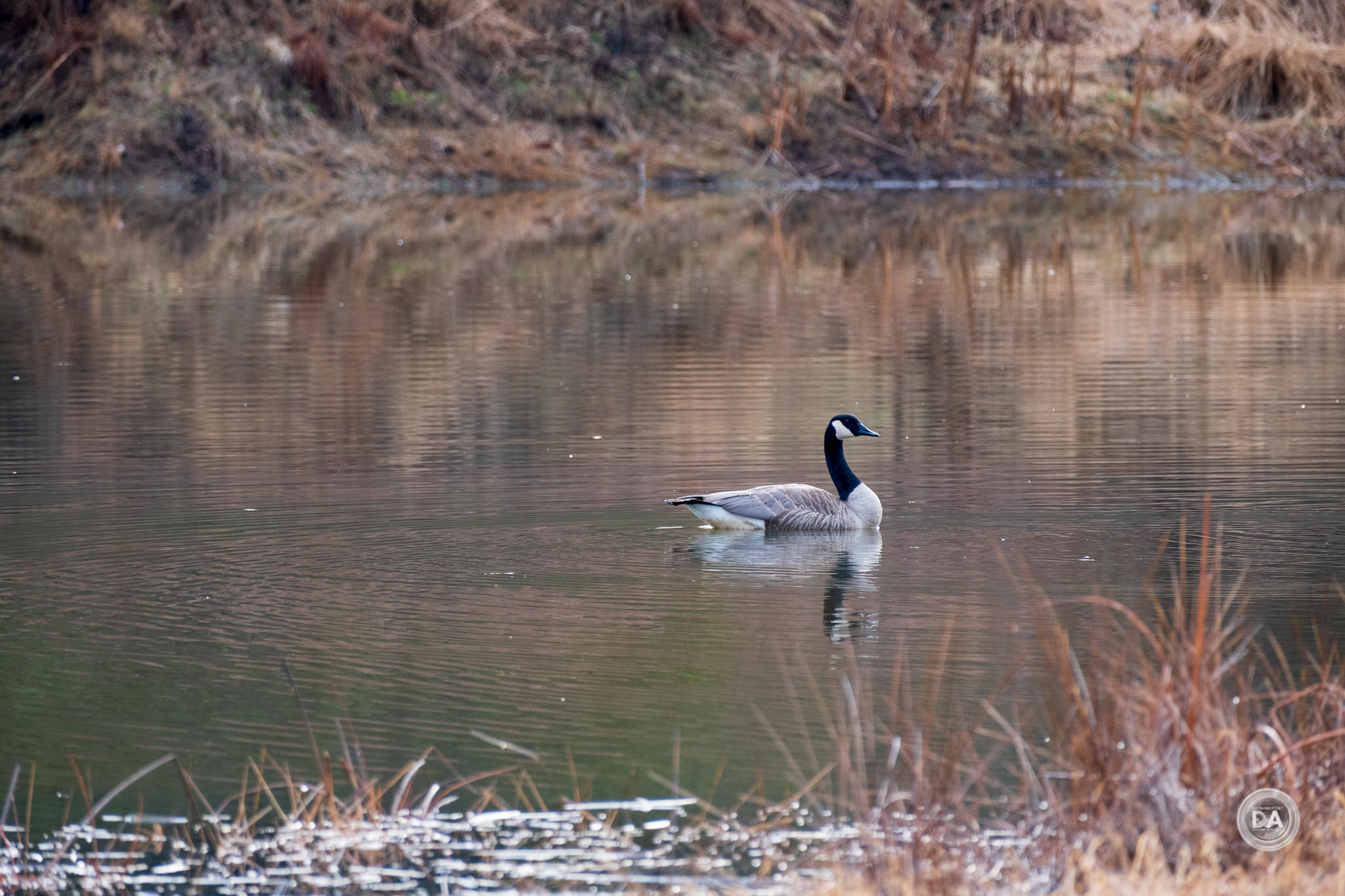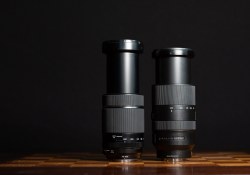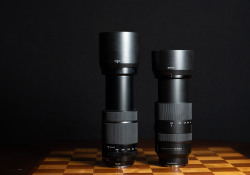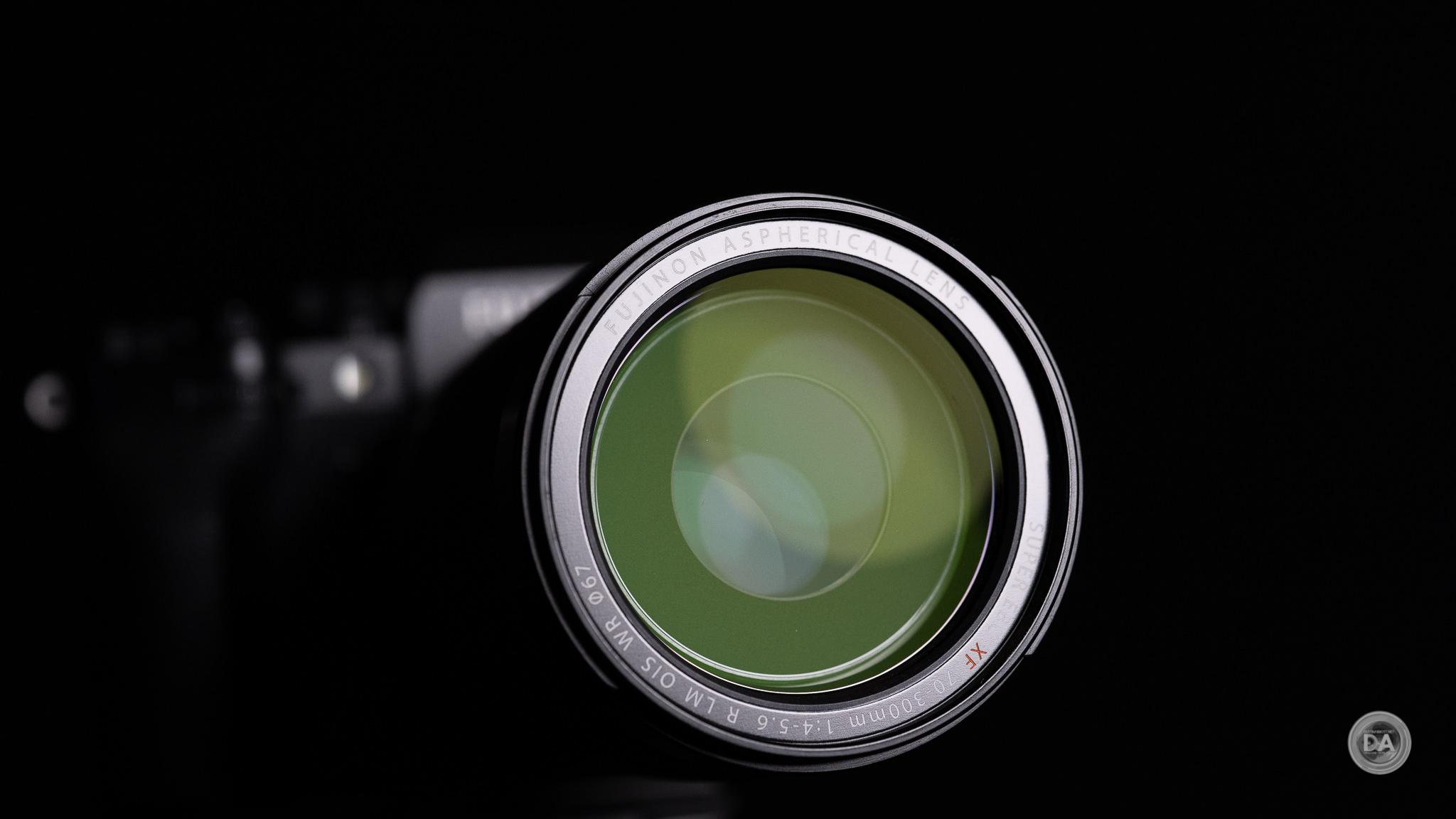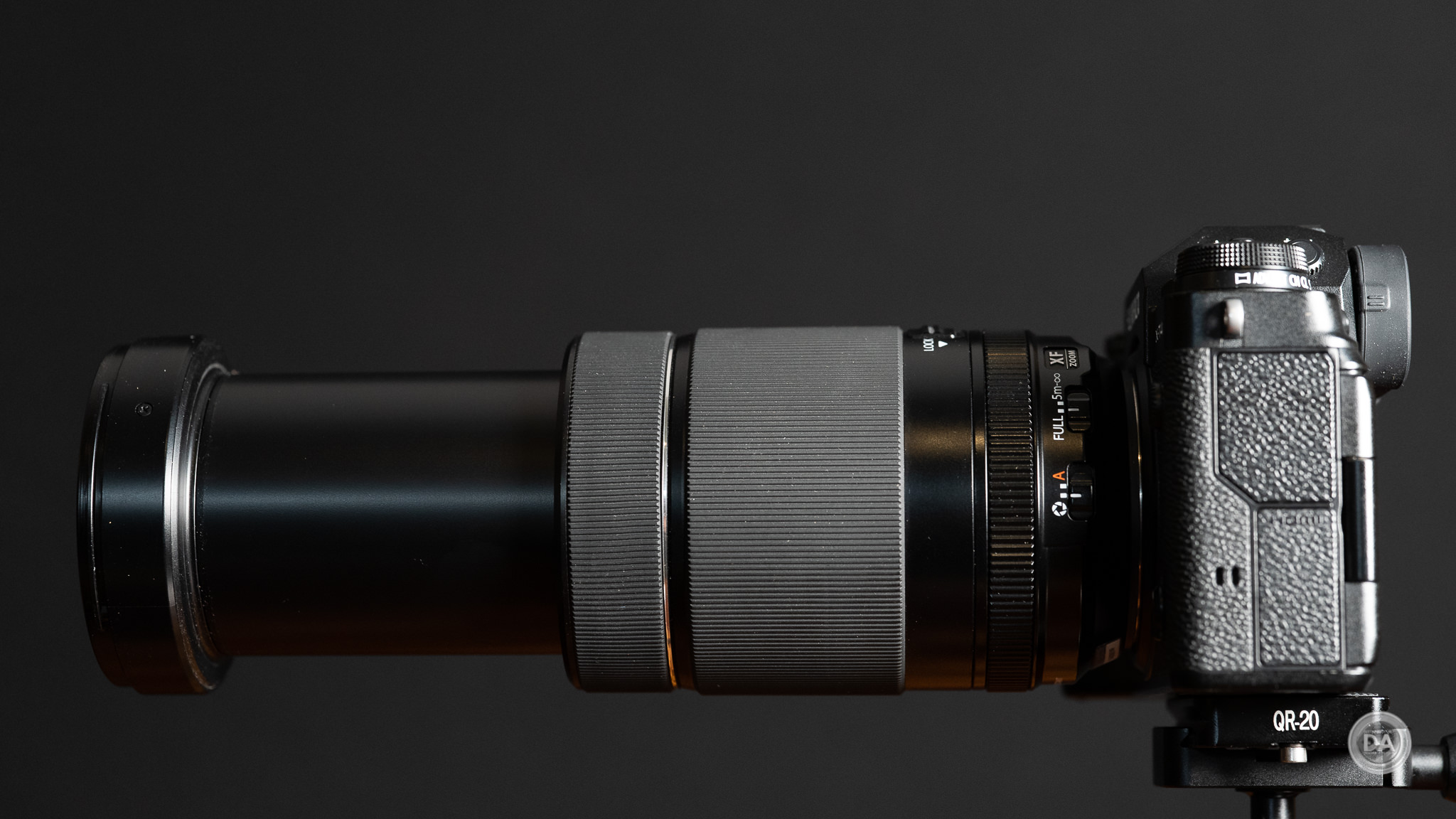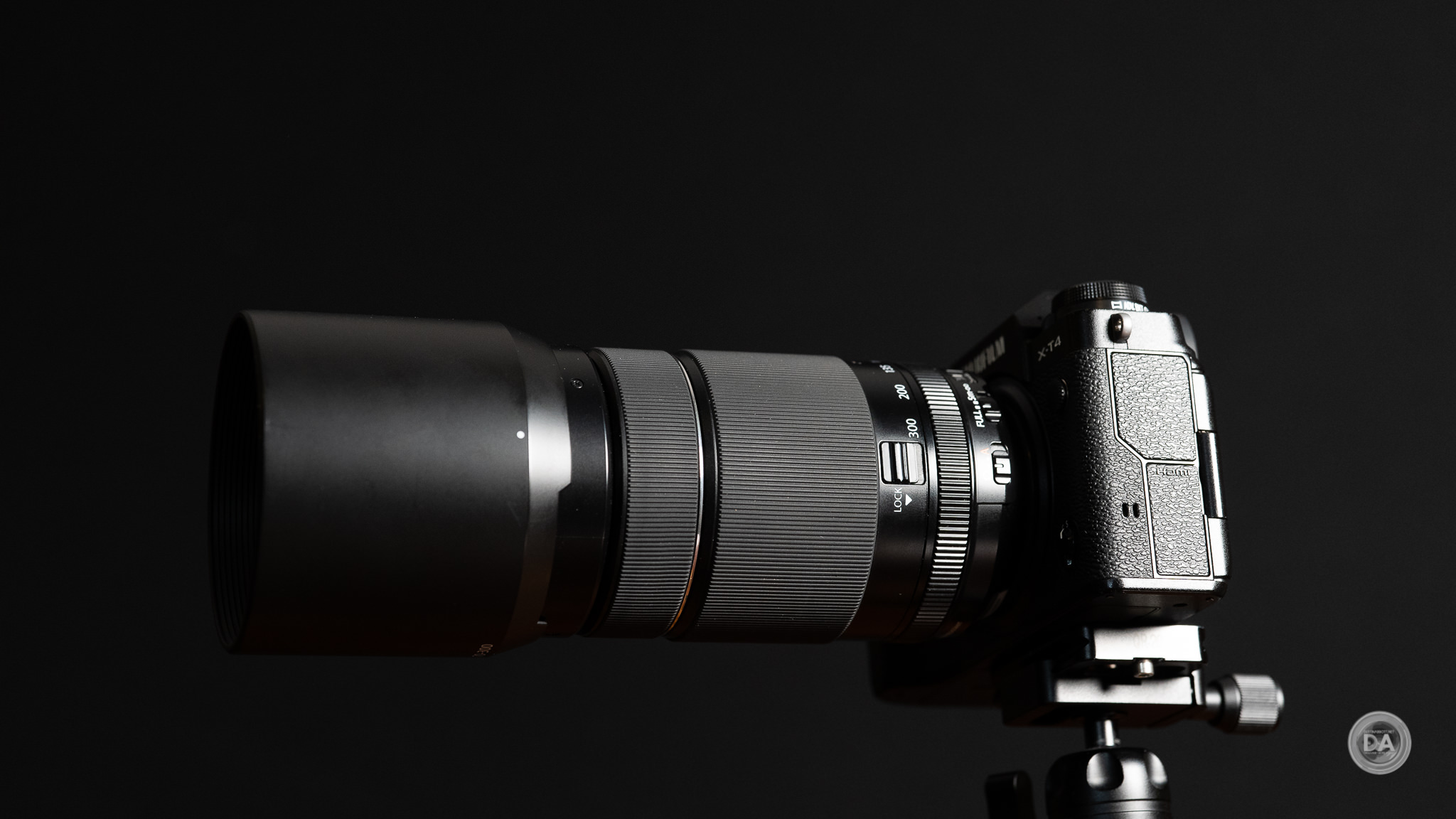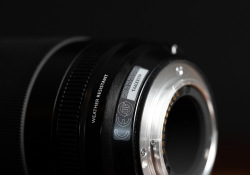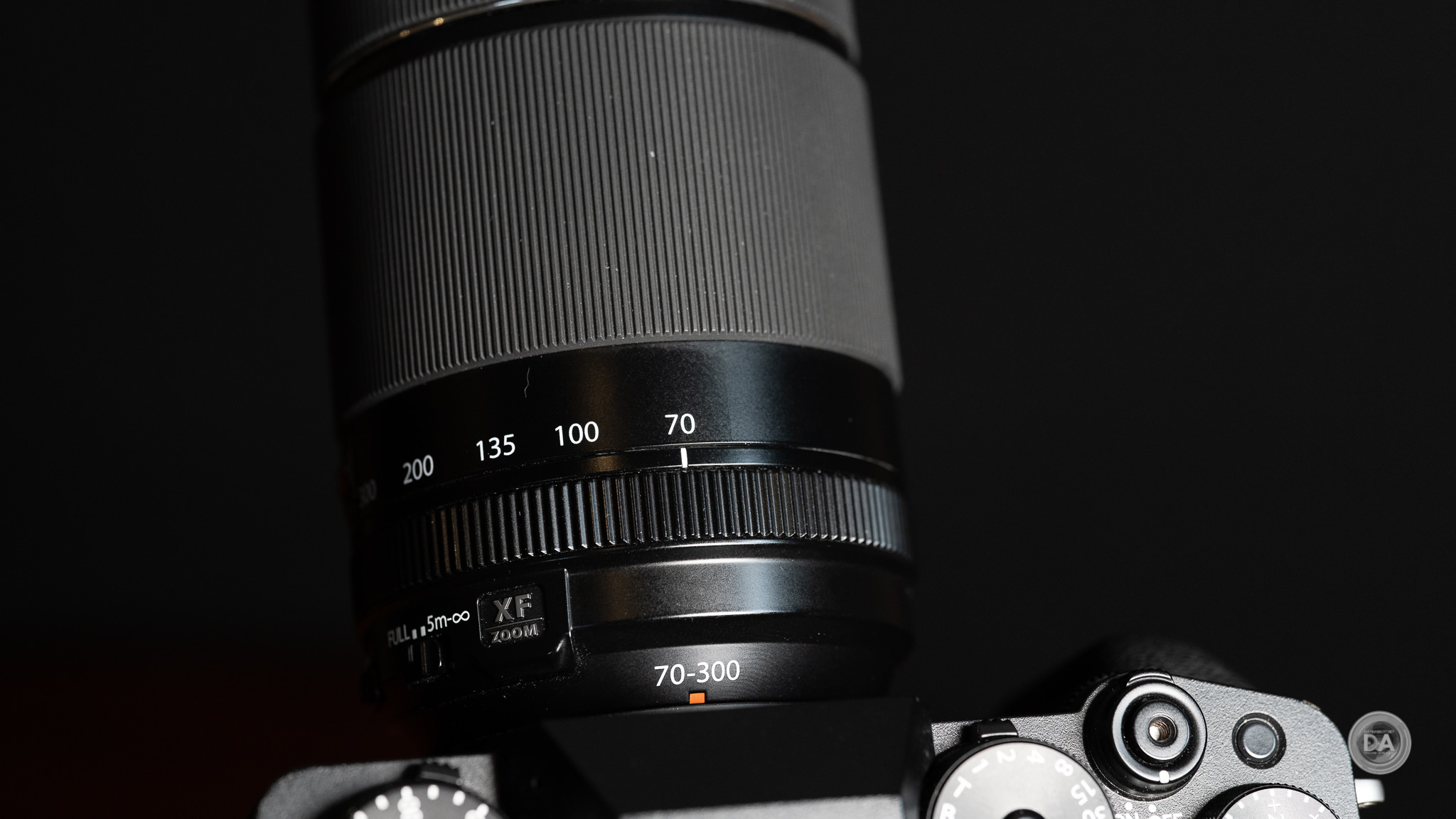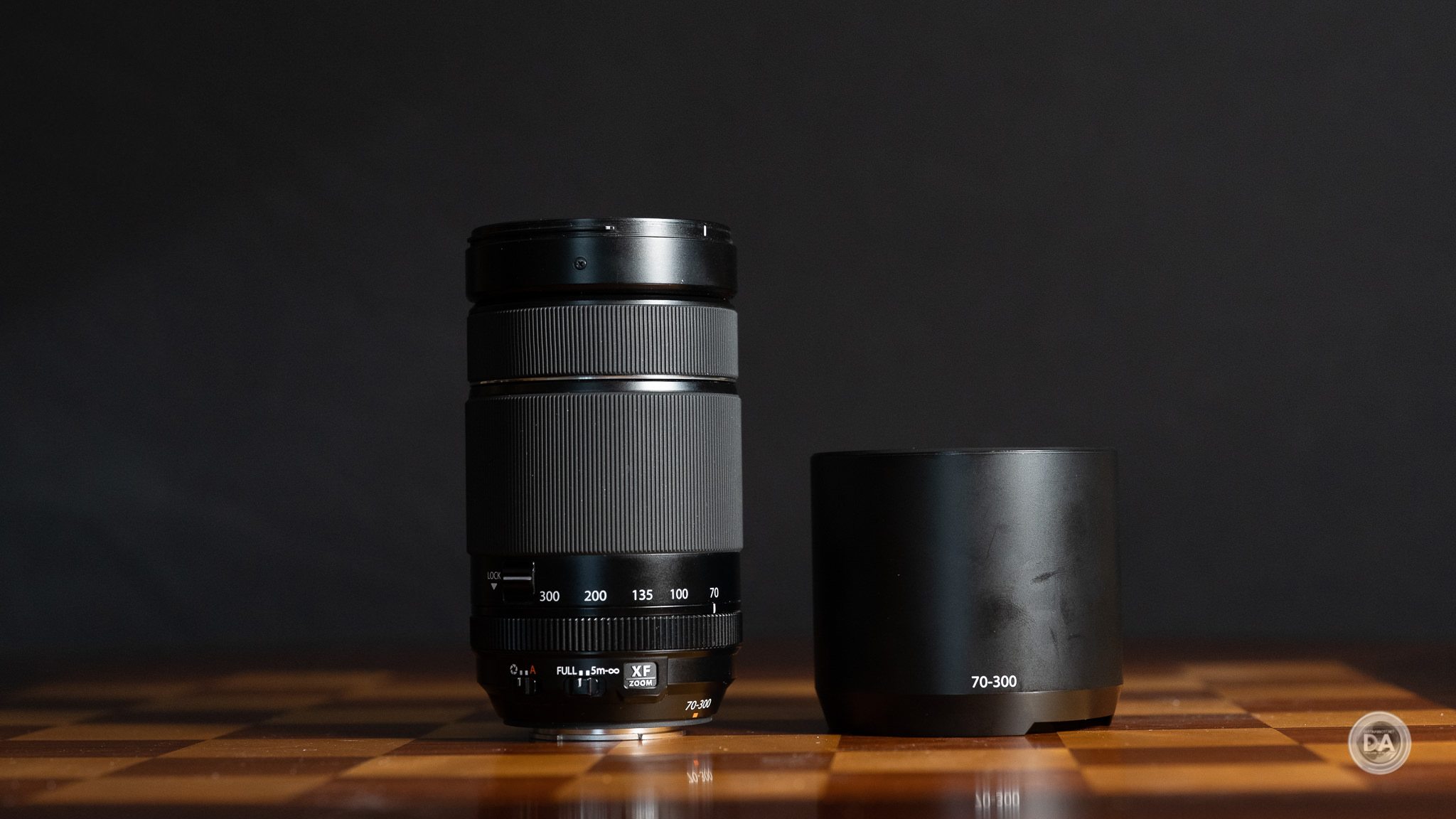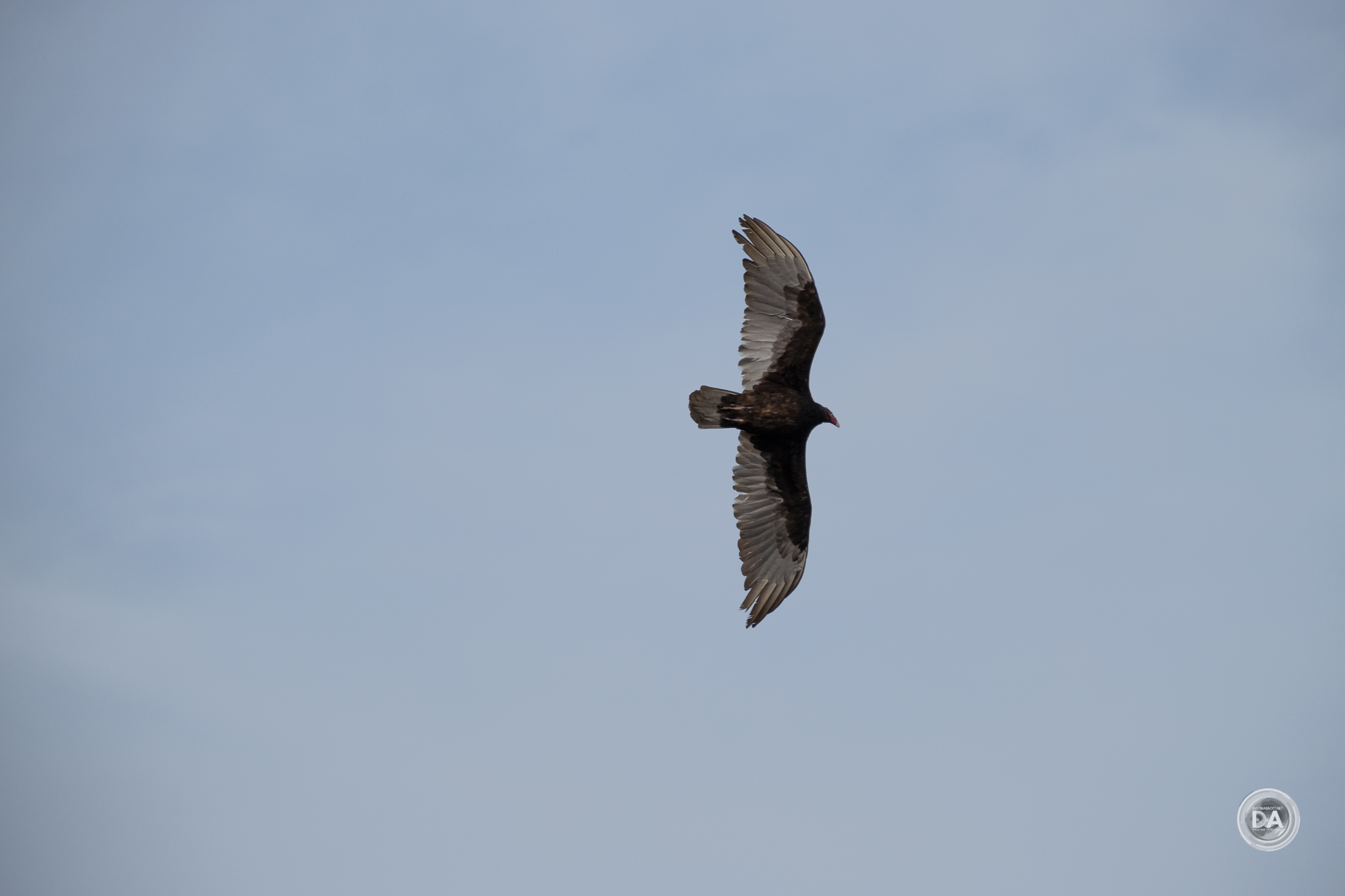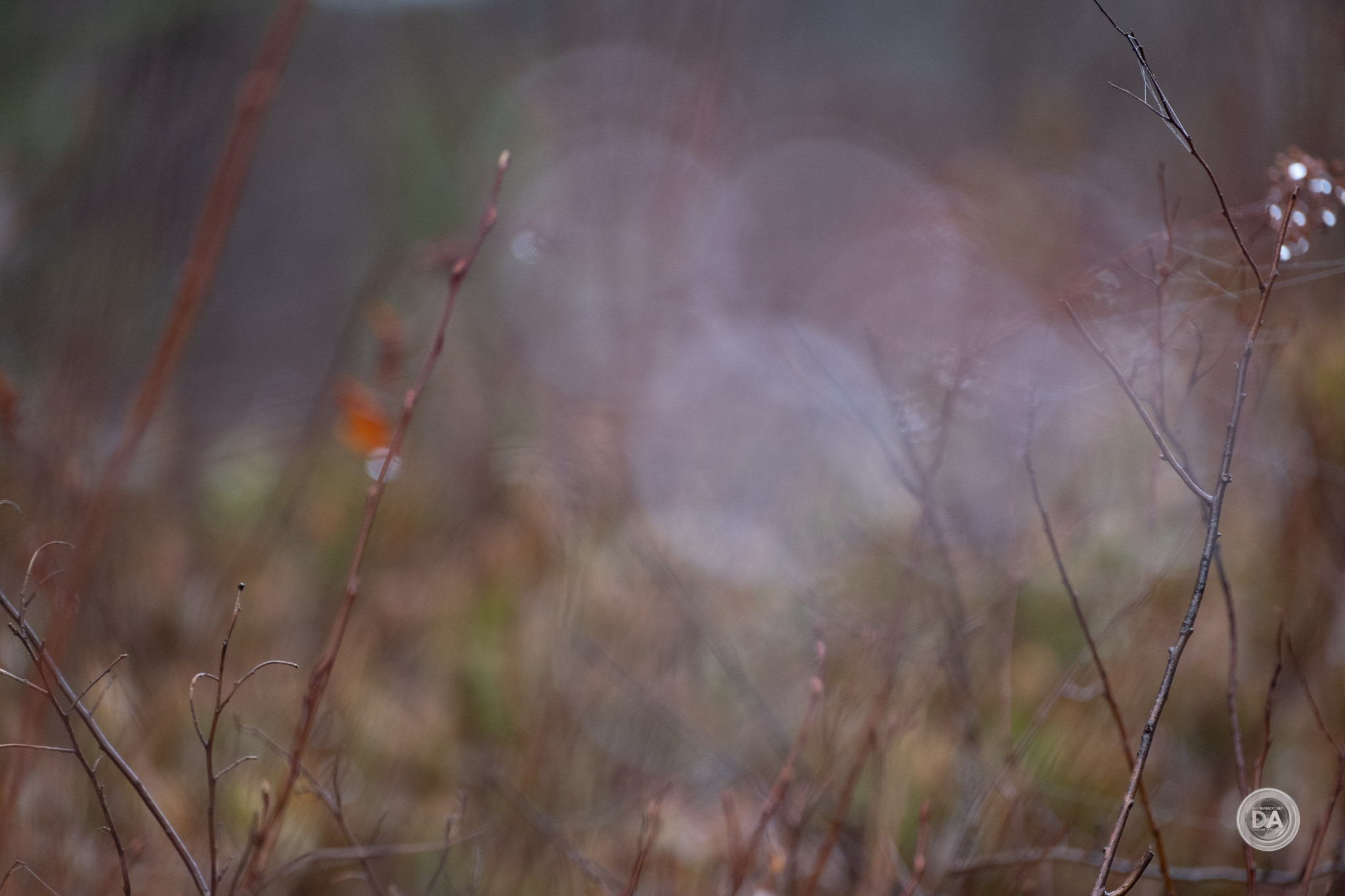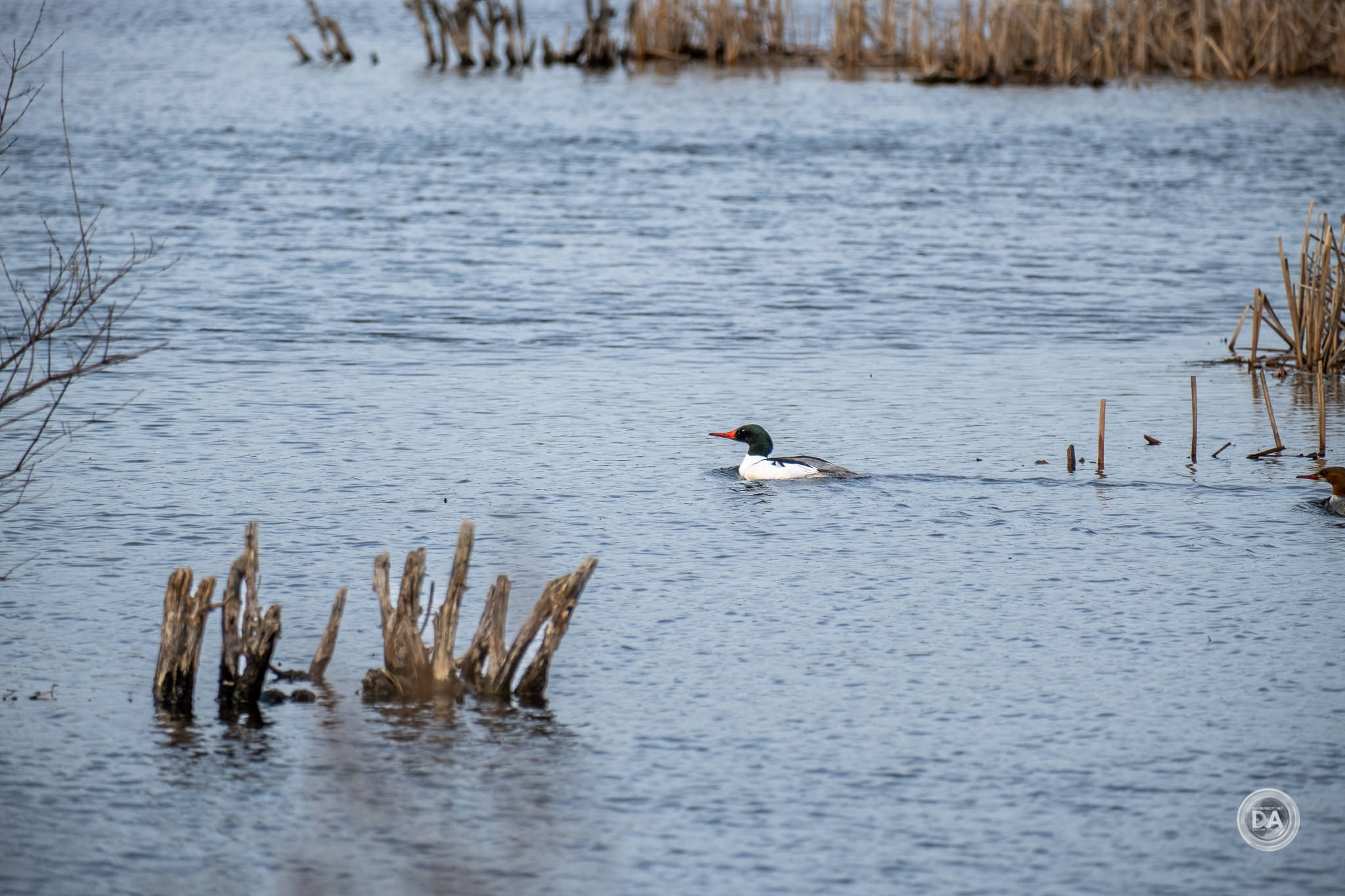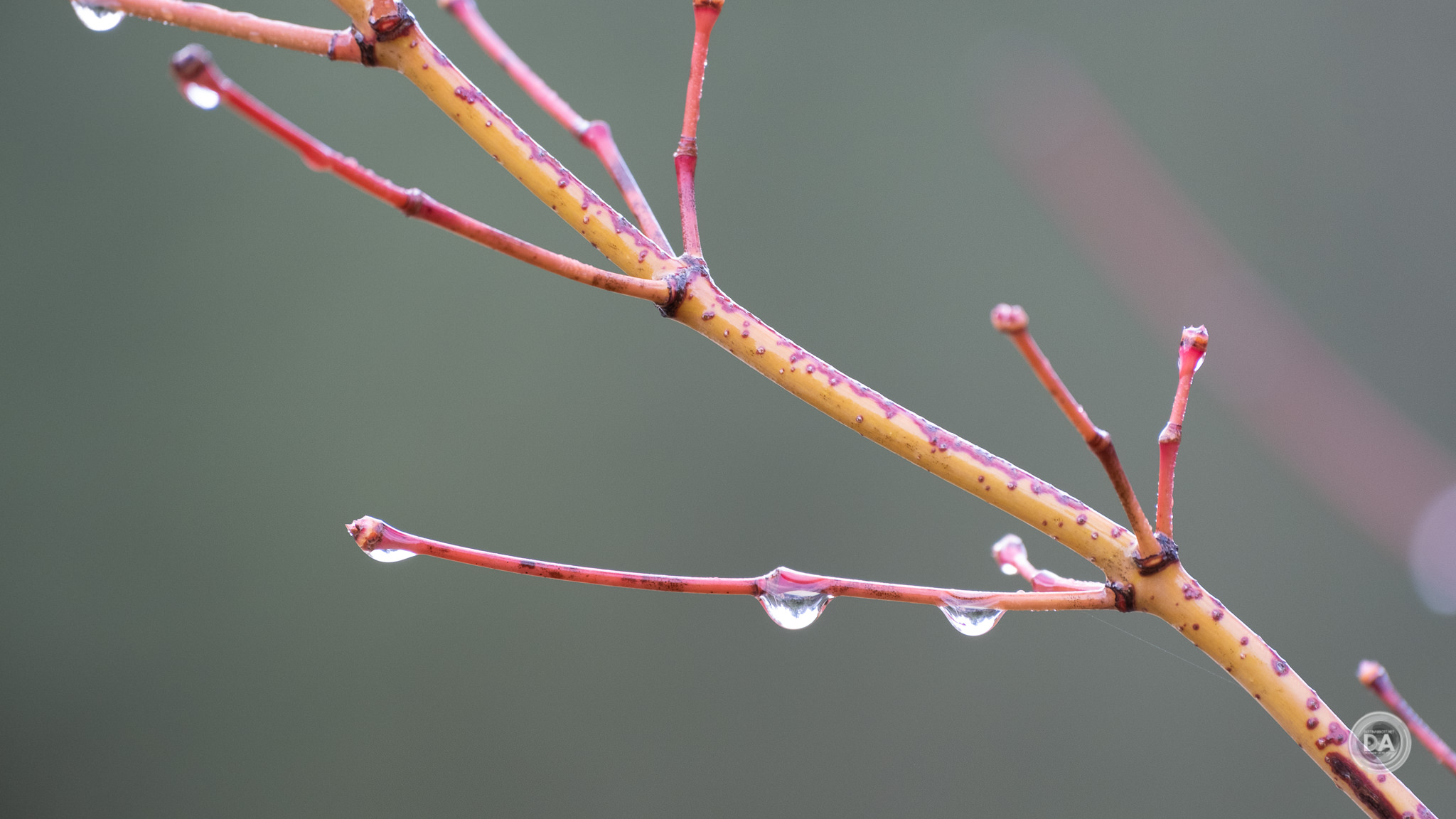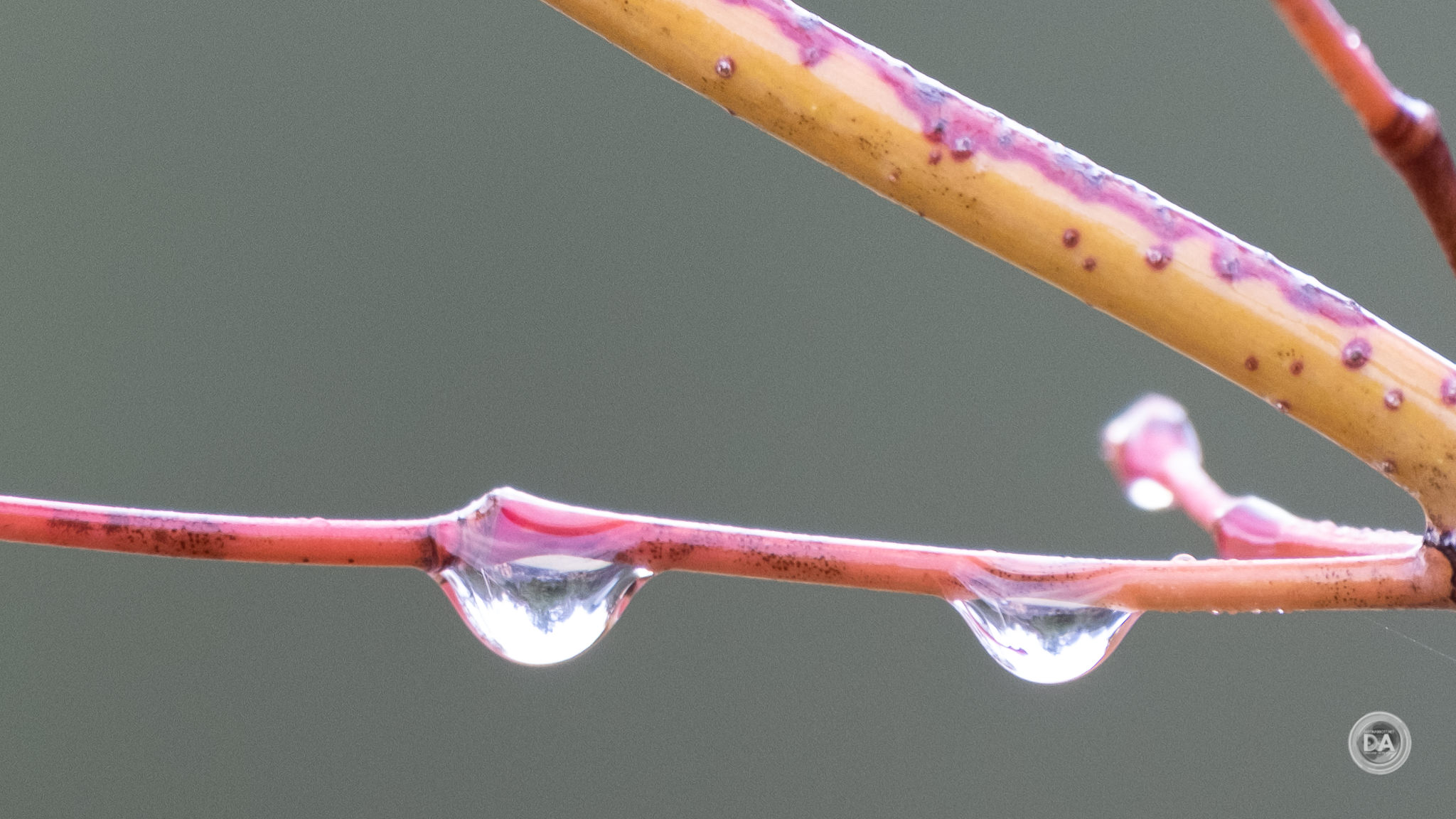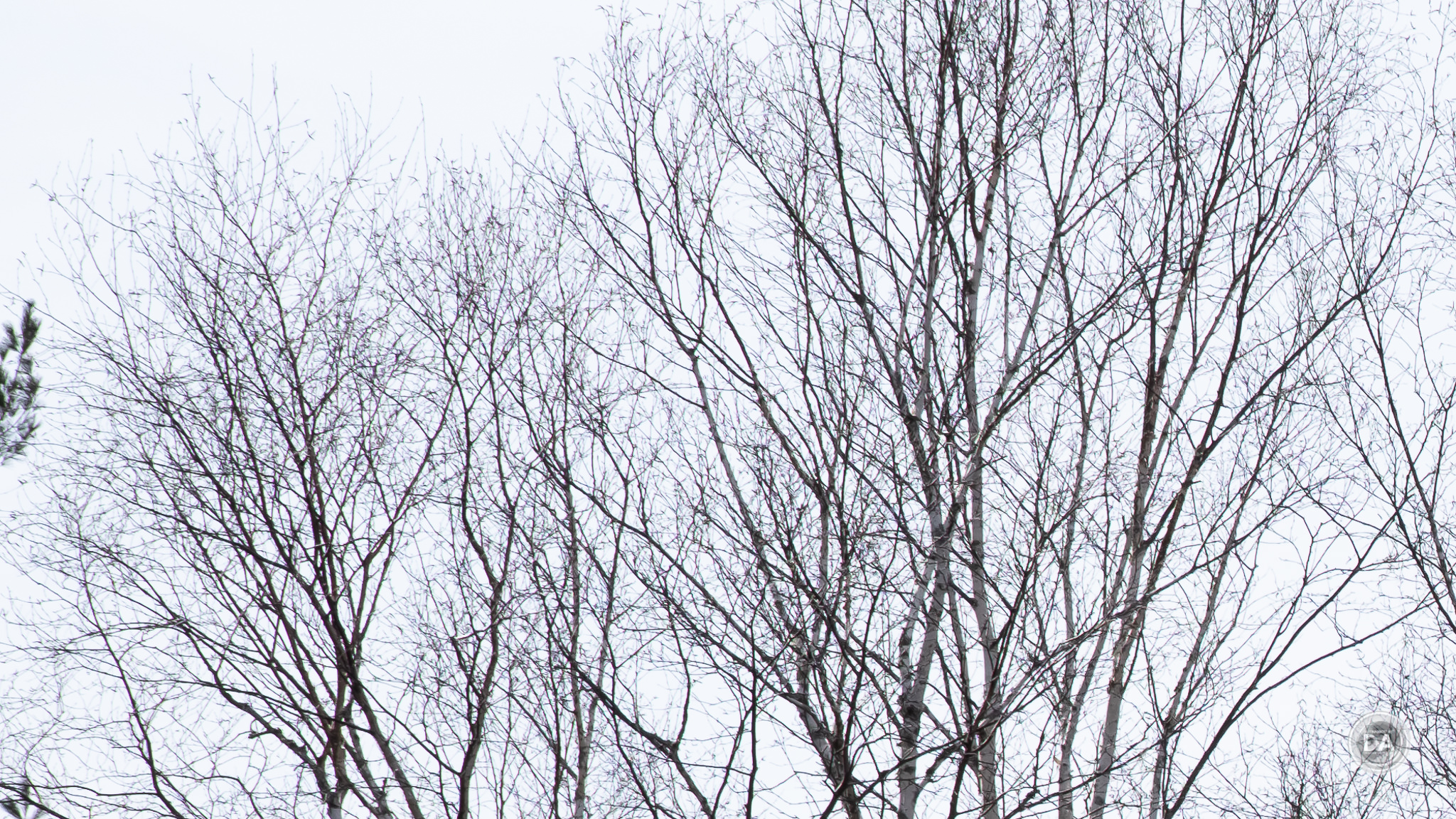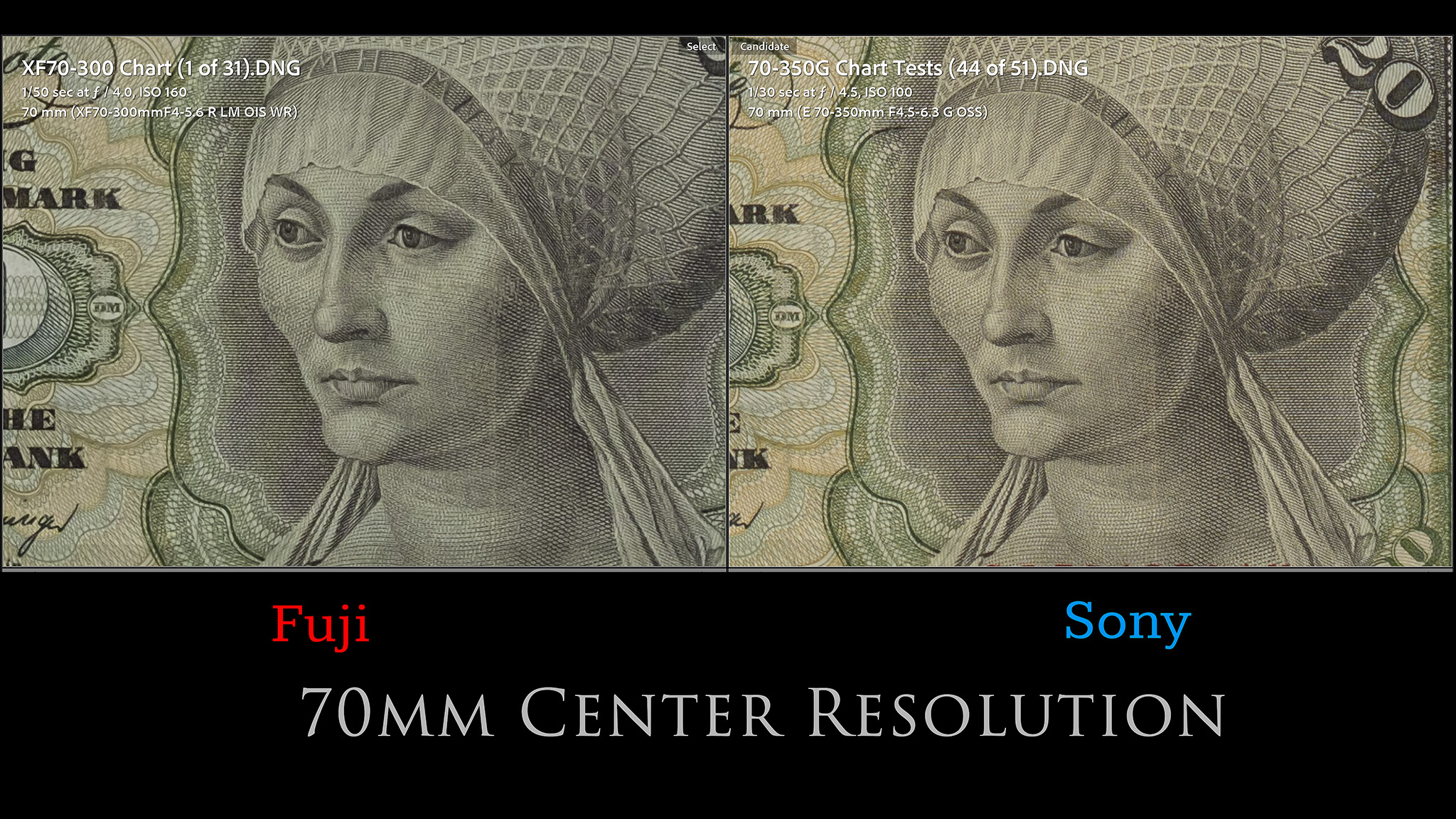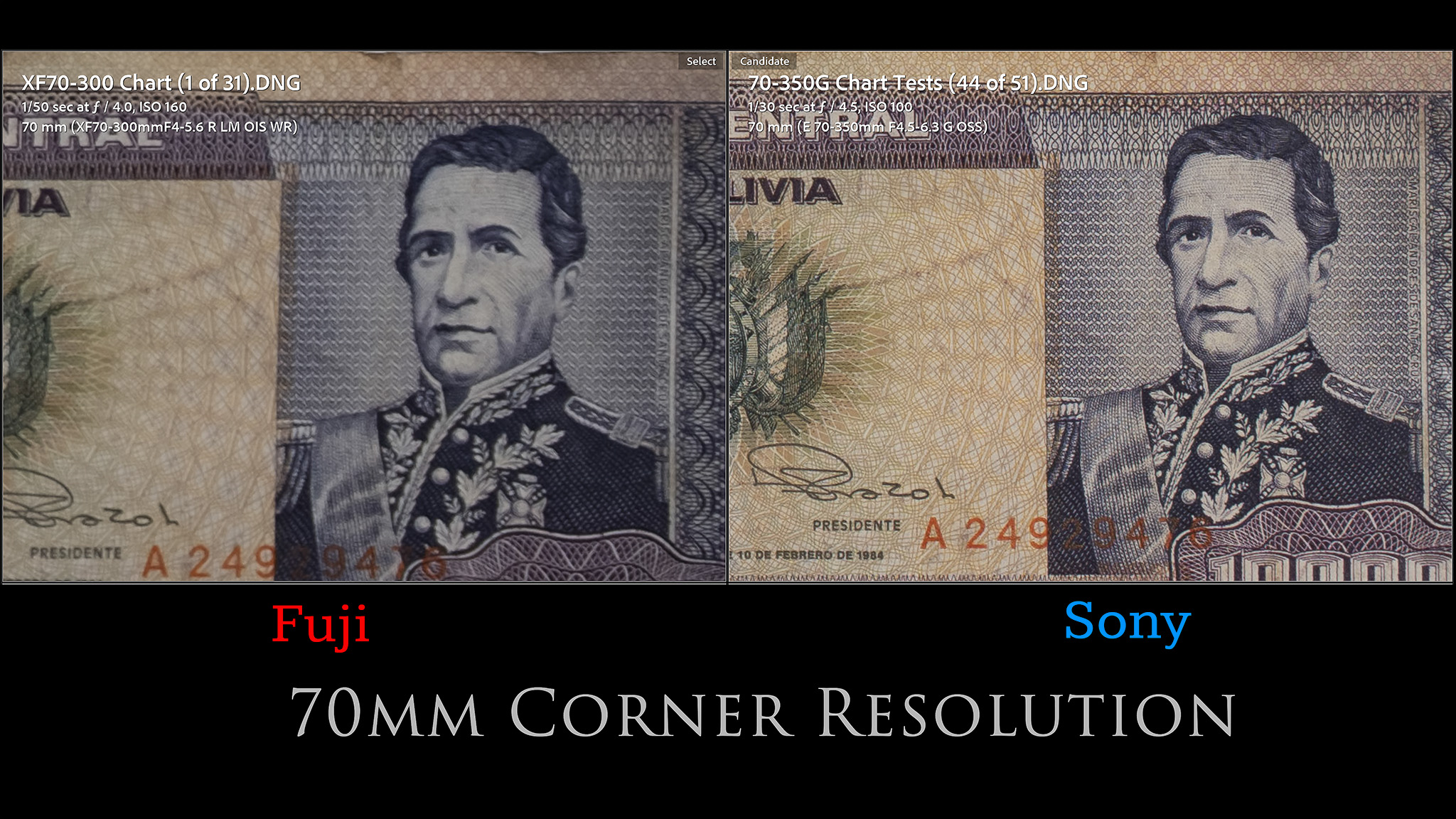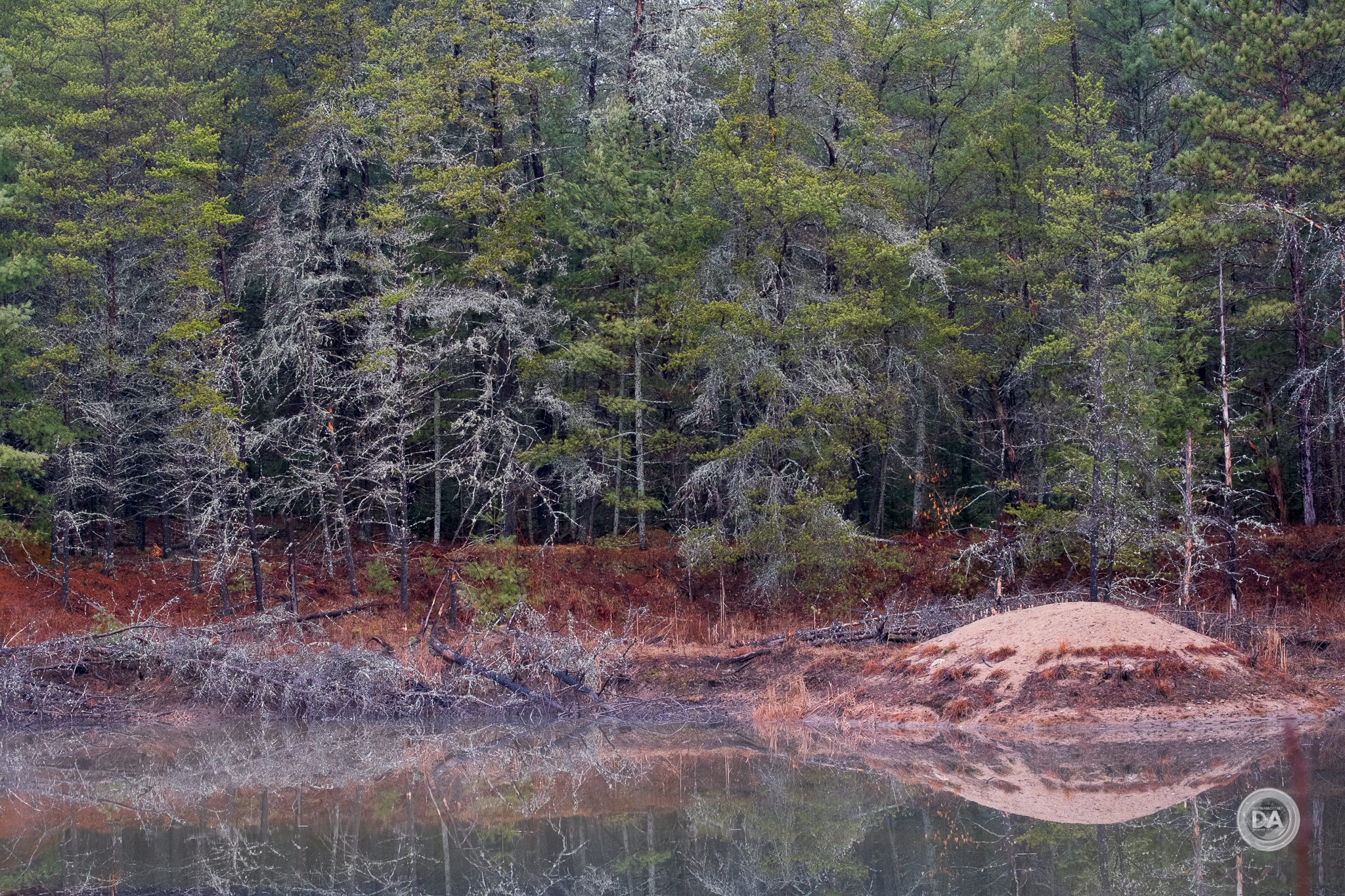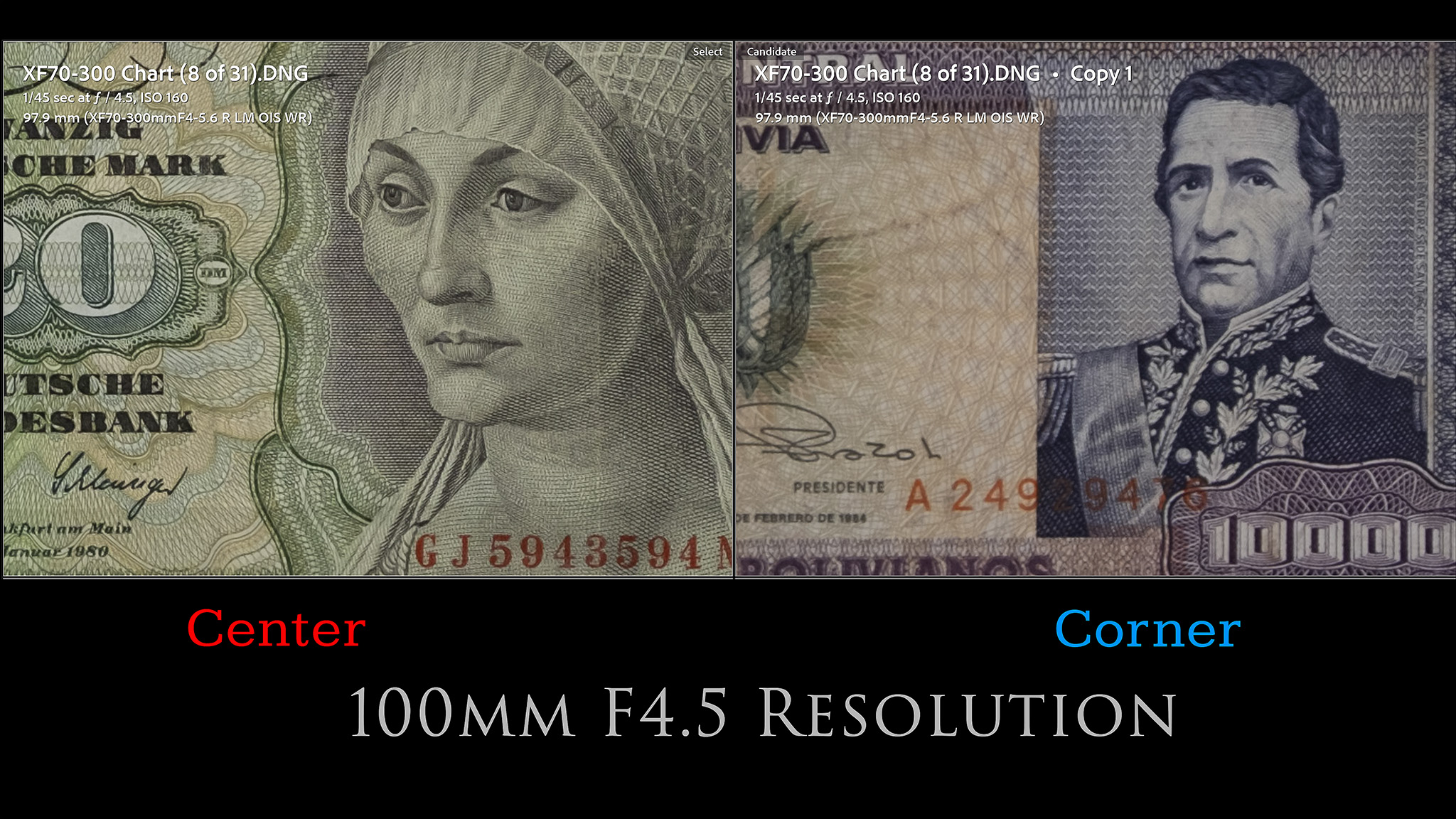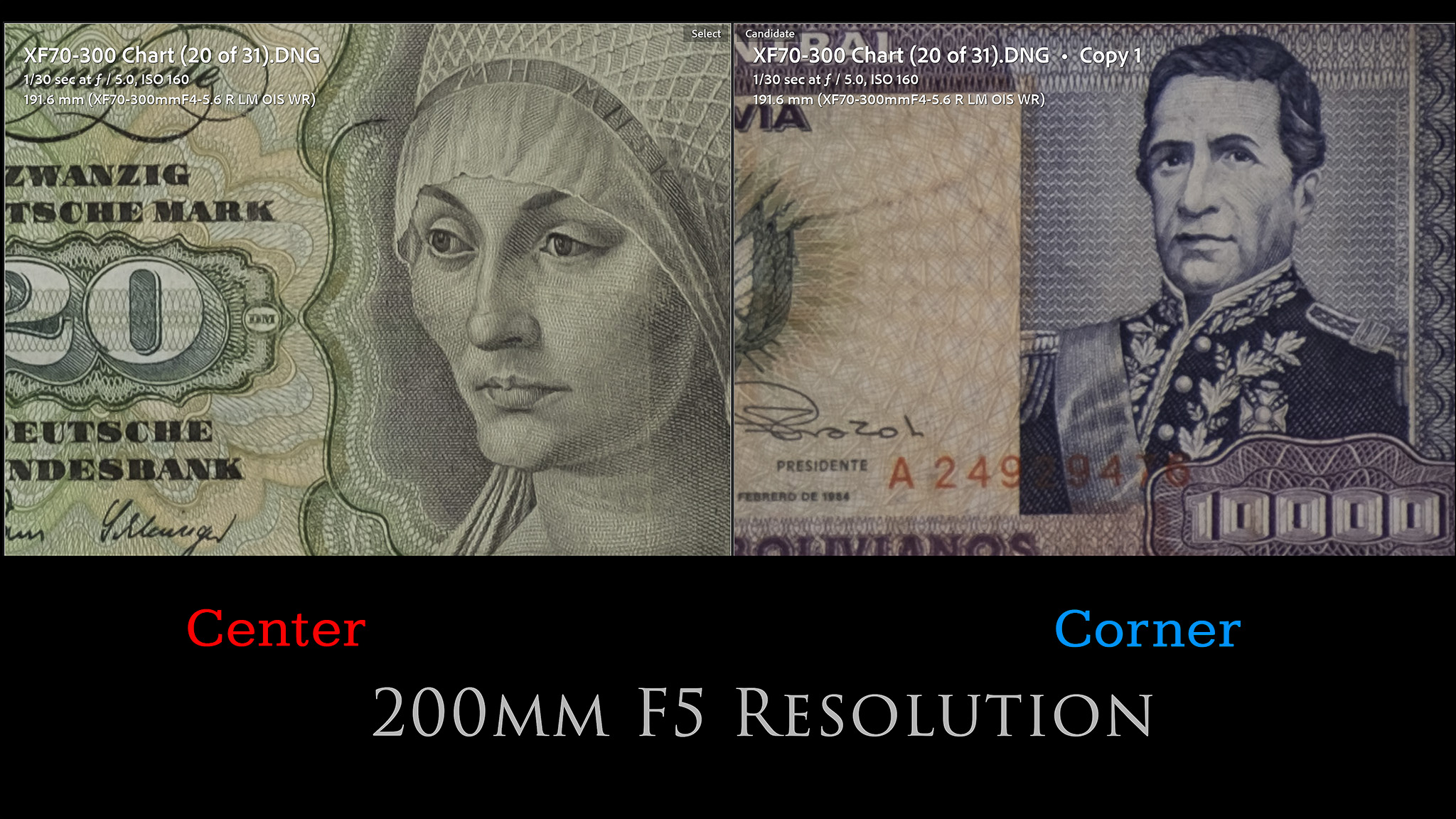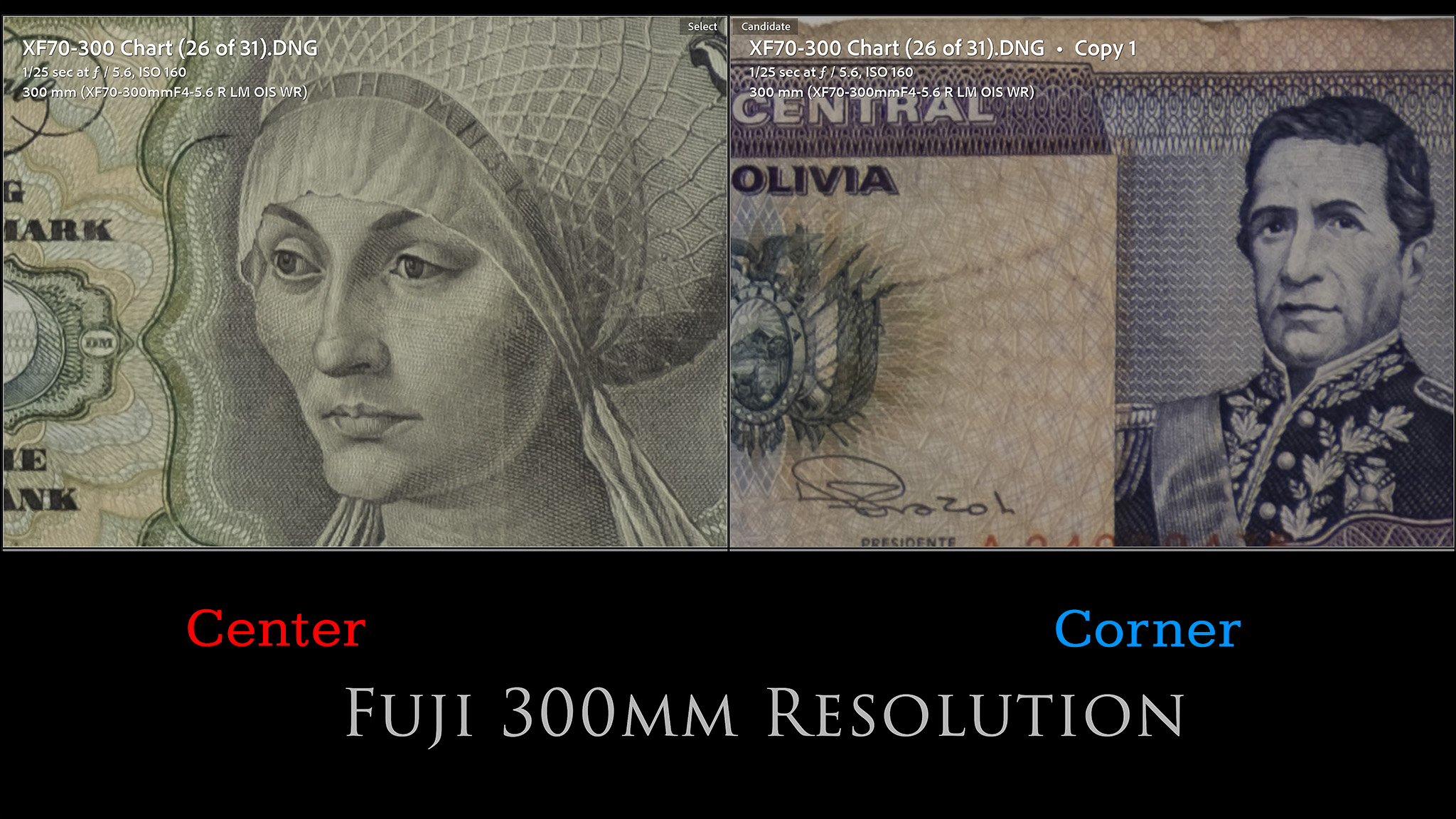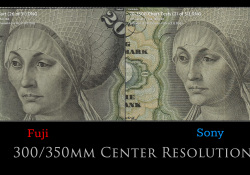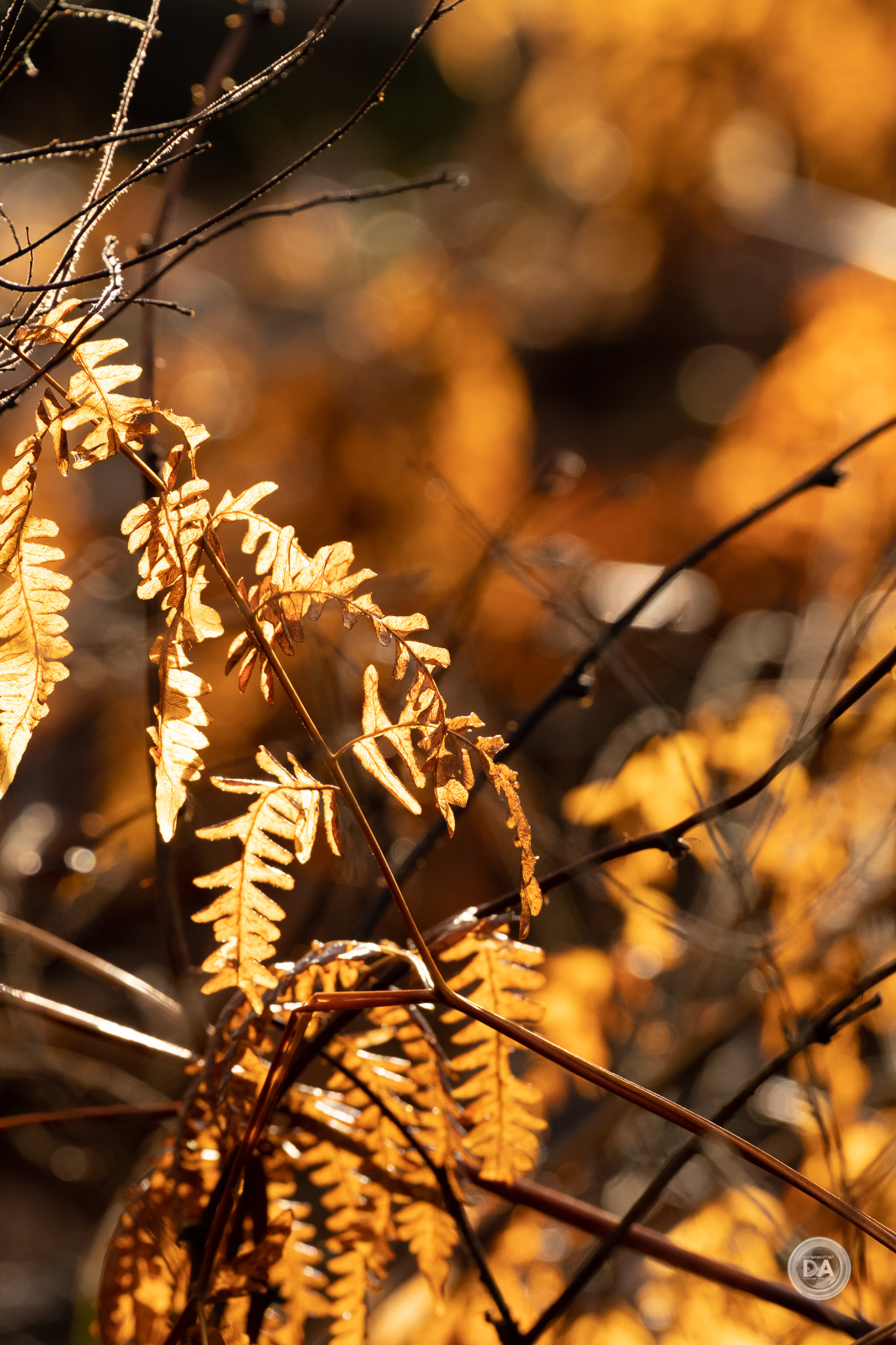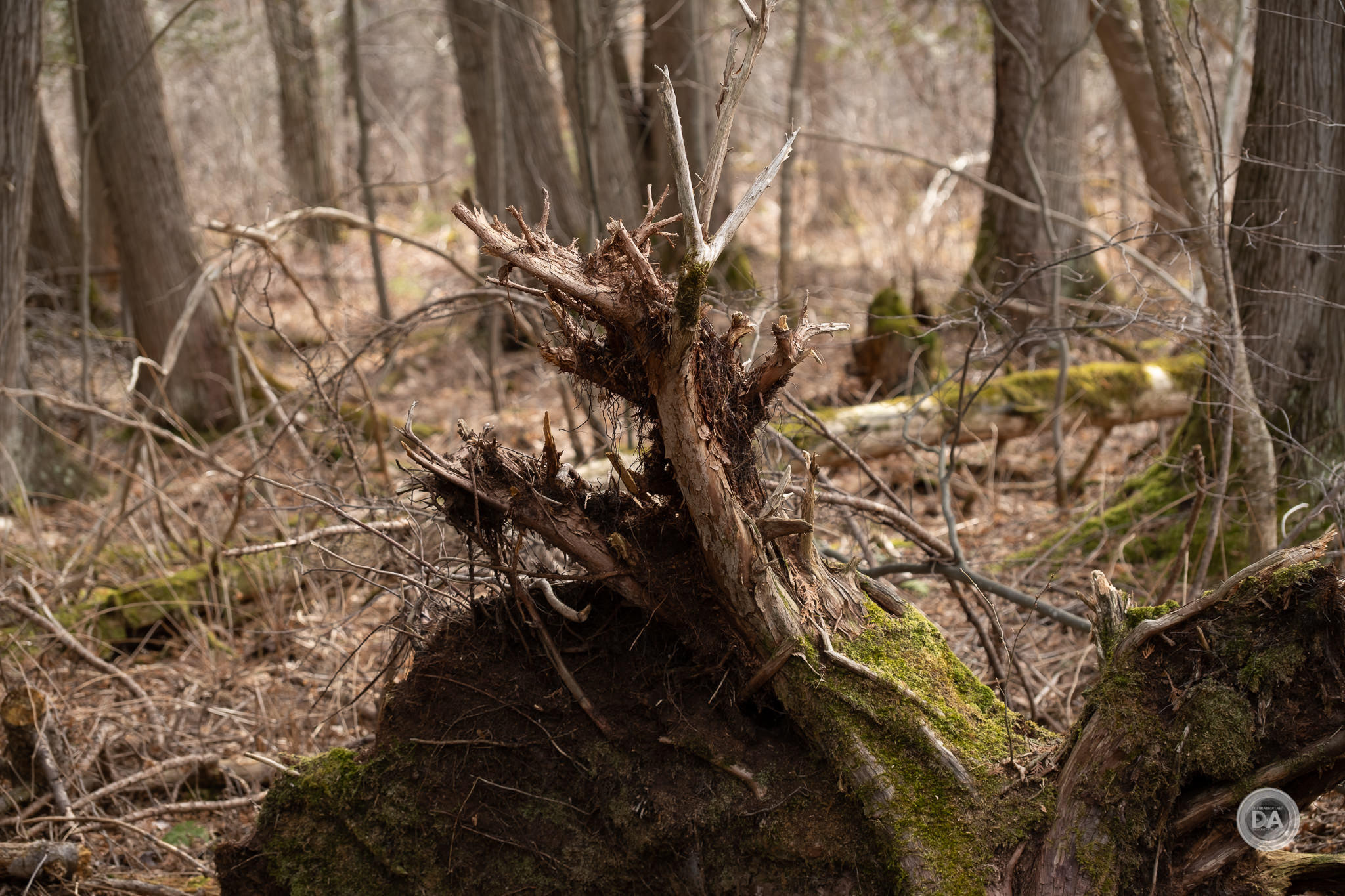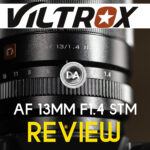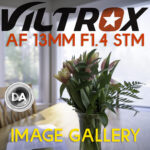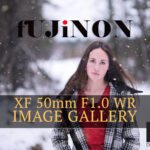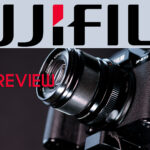Every camera system needs some reasonable options for telephoto reach, and for many full frame platforms, the standard focal lengths are 70-300mm and 100-400mm. The Fujinon XF 70-300mm F4-5.6 R LM OIS WR covers both in a sense, as it carries the standard 70-300mm focal range designation, but since it is designed for Fujifilm’s XF mirrorless system, the 1.5x APS-C crop of the camera system must be applied to every lens. That gives you (according to Fuji) a full frame equivalent focal range of 107-457mm (Fuji’s crop factor is not perfectly 1.5x). That’s an intriguing zoom range, covering from this wide at 70mm:
To as tight as this at 300mm:
There’s a whole lot of photography that fits into that zoom range, and when you add to that a very high potential magnification figure of 0.33x, the photo possibilities are pretty much limitless:
Fuji has an unfortunate tendency of making names for their lenses that are essentially a feature list, so we’ll just refer to the lens as the XF70-300 in this review. But, just in case you don’t “speak Fuji”, here’s what all of that means:
- R = Ring, as in aperture ring
- LM = Linear Motor, referring to the premium focus system found in the lens
- OIS = Optical Image Stabilization
- WR = Weather Resistance
All of this adds up to a lens loaded with premium features, so this is a far cry from lenses like Canon’s 55-250mm type lenses that are more budget oriented. The XF70-300 is a premium product, though the price is a relatively moderated $799 USD. For that money you are getting a nicely built, versatile lens, though it isn’t a perfect performance. We’ll break down the strengths and weaknesses in this review. If you prefer to watch your reviews, you can check out my definitive video review…or just keep reading.
Follow Me @ YouTube | Patreon | Instagram | Facebook | DA Merchandise | Flickr | 500px
Thanks to Fujifilm Canada for getting me a loaner of the XF 70-300mm. As always, this is a completely independent review.
Fujinon XF70-300 Build and Handling
There aren’t really any surprises here in the build and design of the lens. If you are familiar with Fuji’s zoom lenses, you have a pretty good idea of what to expect. The exterior materials are primarily engineered plastics, but everything feels fairly robust and well made. There’s often isn’t really a comparison point for Fuji lenses, as they tend to be the only company that focuses on more premium APS-C lenses, but Sony’s 70-350mm G OSS lens is actually quite similar in terms of features. Both lenses have a similar footprint, with the Fuji being smaller when fully retracted, longer when zoomed out, and longer still when both lenses have their respective lens hoods attached.
You can see how the specs break down in this comparison:
The XF70-300 is a moderately sized lens, with a retracted size of 75mm in diameter (giving a common 67mm filter size) and 132.5mm in length.
That length extends to 204.7mm when fully extended and it weighs in at a moderate 588g.
Unlike the Fujinon 100-400mm OIS lens, the 70-300mm does not come with a tripod collar. To be fair, that 100-400 weighs more than twice as much (1375g) and is considerably larger, but I did note that when I was trying to frame my test chart at the longer focal lengths that I did fight some drifting down due to the weight of the lens extended out beyond the camera body. I didn’t miss the tripod collar for day to day, shooting, however, and it’s worth noting that there is no room on the design to retrofit a third party collar.
We’ve got nine rounded aperture blades inside to help maintain a circular shape to the aperture iris opening when the lens is stopped down.
As noted in the lens designation, the 70-300 WR does have weather sealing. I wasn’t able to locate a diagram that shows the seal points, but Fuji does market the lens fairly well covered in water, so that suggests some confidence in the degree of sealing.
Certainly I would feel safe using the lens in moderate rain without feeling too stressed. The one visible aspect of the weather resistance is the rubber gasket at the lens mount.
There are a total of three rings on the lens. The first, closest to the camera mount, is the standard Fuji aperture ring, which has one-third stop detents and an option to move it into “A” and control aperture from inside the camera instead. Unlike some Fuji aperture rings, however, there is are no external markings to show aperture values, so you’ll have to rely on the reporting from the camera itself.
What you don’t have is any option to declick the aperture for video work, which will be a disappointment to some.
The next ring is the wide zoom ring. It has a rubberized surface and is easy to find by feel. The zoom action is smooth, though there is a fair amount of travel in the zoom ring as the inner barrel really extends quite far out (72mm in travel!)
The final ring near the front is the manual focus ring. There isn’t an AF/MF switch on the lens itself, so you’ll have to rely on the focus mode dial on the front of the camera (if so equipped) or from some other source on the camera. I would prefer having an AF/MF switch on the lens itself for this reason. The focus ring is lightly damped and works fairly well, though there isn’t a lot of feedback from the focus ring (manual focus feels fairly numb). I miss Sony’s Focus Assist that automatically zooms in to help with visual focus confirmation. This is a manual process with Fuji, though there are a number of focus aids available to ensure you nail focus.
There are a couple of switches very near the lens mount. These include the ability to choose to control aperture from the ring or from within the camera and a focus limiter. The focus limiter is a two position switch that allows you to use the full range or eliminate the close focus possibilities – a 5m to infinity range is left. My chief criticism of these switches is that they are very tightly squeezed up against the camera with the lens mounted. The aperture ring is also right there, so there just isn’t a lot of real estate to operate in there.
As noted earlier, the minimum focus distance and magnification is a real strength for the XF70-300. You can focus as closely as 83cm (2.7′), which gives you an excellent 0.33x magnification.
While the detail is not quite macro level, this definitely gives you a very usable amount of close up detail and thus the ability to really isolate details and blow backgrounds out.
The XF70-300 is equipped with Fuji’s OIS (Optical Image Stabilizer), and I’ve frequently been impressed by Fuji’s execution of their stabilizers. This one is no different, offering up good stability even in demanding applications. This 300mm shot was taken at 1/6th of a second, and I was able to get fairly good repeatability even in that application.
It was also nice and stable for video work. I would say the OIS worked a little better on the Fuji than the OSS in the Sony.
The lens comes with a fairly deep lens hood whose finish is not immune to fingerprints and marks, A bit of flocking on the finish would help that.
Overall this is a nicely executed package. I would have liked to see a few minor tweaks to the control scheme (a more traditional aperture ring with the Automatic mode as an option on the ring would have allowed for a more useful switch like either an AF/MF switch or ON/OFF for the OIS to replace it in the switch area). I also don’t love the crowded area near the lens mount, but overall the lens handled nicely in the field and got the job done. I’m very glad to see the weather sealing here, as that gives more confidence in the diverse shooting situations this kind of telephoto lens will find itself in.
Fujinon XF 70-300mm F4-5.6 LM Autofocus Performance
Fuji has equipped the XF 70-300mm with their better focus system. It utilizes a Linear Motor focus system that allows for smoother, faster, and quieter focus than the cheaper motors allow. That is important in a lens that might include the tracking of action or birds in flight.
I did some side by side comparisons with the Sony E 70-350mm G OSS (my review here) mounted on a Sony a6400 body and the XF 70-300mm mounted on a Fuji X-T4. The X-T4 is the more upscale camera, but one area where Sony excelled was in the quality and confidence of autofocus. I felt like I locked onto subjects faster and more intuitively with the Sony combo. In theory the X-T4 is the superior body for tracking, with faster burst rates and more tech under the hood. In practice, however, Sony has the more sophisticated product. I found the Fuji combination very, very reluctant to pull focus to the foreground again and again. I wanted to take advantage of that great magnification, but autofocus just wouldn’t cooperate, and I’d end up with this:
…when what I wanted was this:
I achieved the latter result only by first manually focusing to the proper zone, and then autofocus would be more cooperative.
I got better results when the subject was a little further away and there were very few distractions, like here:
I got better results in similar situations with the Sony. Even when shooting my test charts I found that I couldn’t rely on autofocus with the Fuji combination and had to carefully manually focus to achieve the best results. I also found the Sony combination more confident when focusing on more distant birds even though both cameras have similar animal and eye detection protocols. This shot is fairly well focused, but I had others in the same series where focus drifted to either front or back focus without really confidently grabbing the desired subject.
I also used the lens to document a conference that I attended, and while I was largely happy with the end results, I did fight the focus system in situations like this where the subject was in profile (though brightly illuminated) but a more distant subject (in shadow) was faced straight on with the camera. Eye detect wanted to go to the distant subject even though I would put a focus point right on the speaker. I often had to experiment with focus settings to get the focus system to do what I wanted.
In general, though, I was happy with the actual end results even though I was shooting at IS) 3200 for the event. Fuji does a very good job with ISO performance in this range.
Now, to be fair, it is very hard to separate the results from the lens with the performance of the camera itself, and while the X-T4 is one of Fuji’s best XF mount cameras, I don’t think their focus systems are as sophisticated as the leaders like Canon and Sony (and catching up quickly – Nikon).
You learn how to make it all work, though, and I have a lot of well focused results in my catalog from my time with the XF 70-300mm OIS.
As for video performance. Focus pulls are quiet though not silent. I could pick up fair whirrs and clicks with the on board mics, but they are faint. There’s a little more visible stepping than with some competitors lenses, but I do see improvement over past Fuji lenses. I did see a bit of final adjustments (settling) after the appropriate focus point was reached. Focus breathing is there but not extreme.
The combination was fairly good in tracking my face on camera and in making the transition from my extended hand (shielding my face from the camera) and then pulling it out of the way so that focus could move to my face. I didn’t see pulsing or uncertainty there, so I do think Fuji is improving in this regard.
In short, I think autofocus is good for a Fuji lens at this stage, though the focus experience still lags a bit behind the competing lens/camera from Sony.
Fujinon XF70-300 Image Quality
I did a video breaking down the relative strengths and weaknesses of the Fuji 70-300mm and the Sony 70-350mm and came to some interesting conclusions (which you can see here, if you like):
In quick summary, however, is that I preferred the Sony on the technical merits of performance (more consistent sharpness across the zoom range) but I preferred the “look” of the images from the Fuji. The combination of color, contrast, and overall rendering made even a very simple image like this look special.
That’s not to say that this isn’t a sharp lens. At its best, it can easily resolve the 26MP of the Fuji X-T4:
But it isn’t mind-blowingly sharp across the frame or at every focal length. I found that this is a lens for those who appreciate looking at images as a whole as opposed to those who spend all their time at 100% magnification…which we’re about to do.
I’m not going to waste time with vignette and distortion. The nature of Fuji’s design is that even RAW images have embedded correction profiles, so I can’t even defeat them in Lightroom (I would have to disable them in the camera). If you’ll never see the results without correction, then it is a moot point to show them to you here. We will move on to other tests instead.
First, a look at chromatic aberrations. This shot of water droplets hanging from a bare branch is full of opportunities for fringing. While there is a little bit of blooming in the transition areas, I don’t see any fringing, and I didn’t notice longitudinal chromatic aberration ruining any of my images.
Good news there. I also watched for Lateral Chromatic Aberrations towards the edges of the frame in high contrast areas, but I saw little evidence of fringing there, either.
So, between optical corrections and digital corrections you won’t have to worry about vignette, distortion, or chromatic aberrations. That’s a good start. So, how about the sharpness and contrast?
The tests were done with a 26MP X-T4 body on a tripod with a two second delay to eliminate any vibration. In my video tests I show the chart results at 200% to better highlight subtle nuances and also show some of these comparisons at 20o%).
Let’s start at 70mm. We can see that the maximum aperture here is F4 (an advantage over the Sony, which starts at F4.5). Center sharpness looks excellent even at 200%, but you can see that the corner isn’t resolving as well:
The midframe results are just a little poorer than the center shown here, but obviously the corners aren’t fantastic. That’s really where the Sony excels, as the two lenses don’t look much different in the center of the frame at 70mm:
The corners, though are a vastly different story, where the Sony looks dramatically better.
Whether corner sharpness is a big deal or not really depends on the subject matter and preferences of the photographer. You will see improvement in the corners when you stop the lens down, but they never look as sharp as those on the Sony. Here’s a look at the difference between F4 and F8:
Even at F8, that’s good, not great. Landscape images look good, however, even if every detail isn’t pin sharp.
Unlike many variable aperture zooms, the minimum aperture remains a constant F22 throughout the zoom range. I typically don’t ever stop down past F11, however, as contrast at F16 and F22 typically really takes a hit due to diffraction.
At 100mm the maximum aperture is F4.5, which highlights one advantage relative to the Sony lens. That lens starts at F4.5 and ends at F6.3, and the Fuji lens is about 1/3rd stop brighter throughout the zoom range. Resolution and contrast have a minor bump wide open over performance at 70mm:
I felt there was slightly more capacity for sharpening up when stopped down, though I didn’t see anything night and day.
At 135mm the maximum aperture is F5, and again I saw an extremely mild improvement in sharpness and contrast relative to 100mm:
There is some mild improvement available when stopping down to smaller apertures like F8.
At 200mm the maximum aperture remains F5, which is the largest aperture advantage over the Sony, which has closed down to F6.3 (a 2/3rds stop advantage for the Fuji). That makes the Fuji the better lens in dimmer lighting conditions. On a more negative note, however, the sharpness profile peaked around 135mm, and 200mm shows a slightly softer result in both the center and corner.
This trend continues as we move on to 300mm (now at the smallest maximum aperture of F5.6, which we reach at roughly 215mm). 300mm is very slightly softer than 200mm:
The Sony is an easy winner in terms of resolution at 300/350mm in both the center and corner of the frame:
But as I’ve noted already, while the Sony is the technical winner, I really did love the look of the Fuji images. Something about the rendering from the lens is very special. The colors seem much nicer than what I often see from lenses like this:
Here’s another image that I took right out of the camera in RAW form and felt like I could do little to improve it. It just looks great.
Adding to the lovely rendering is the fact that bokeh from this XF70-300 is better than average. It has a very nice quality to it.
I found even potentially busy scenes rendered quite well, and the combination of beautiful color and quality bokeh made for some great looking images.
At longer focal lengths you can really blur out backgrounds if you are close to your subject.
This is a lens that really rewards those who appreciate the overall feel of images rather than just live for technical perfection. It’s not the sharpest lens I’ve seen covering this focal range, but it does have a really nice quality to the images that I find very appealing. You can check out more photos by visiting the image gallery here.
Conclusion
The Fujinon XF 70-300mm F4-5.6 R LM OIS WR is the kind of lens that every system needs. It allows people access to telephoto photographer (birds in flight, wildlife, even compressed landscapes) at a reasonable point of entry in terms of price. It also does so while maintaining a slightly larger maximum aperture than many competing lenses. My favorite thing about the XF70-300 is the rendering, however, which provides a really nice blend of color, contrast, and bokeh.
There are many subjects that fit into this large of a zoom range, and I found the lightweight package a joy to bring along for hikes through the woods.
It’s not a technically perfect lens (the Sony 70-350mm G is sharper), but the Fuji really excels in the quality of the rendering, delivering images that I just instinctively liked.
At a price point of $799 USD, this is a moderately priced lens that is a much cheaper alternative to nearly $2000 XF 100-400 OIS lens. It’s also significantly lighter and more compact, so if you find hiking or traveling with a heavy telephoto lens to be a burden, the XF 70-300mm F4-5.6 LM WR OIS might just the perfect lens for you.
Pros:
- Nice build
- Quality weathersealing
- Linear motors provide a smoother, quieter focus experience than many Fuji lenses
- Faster maximum aperture than some competing lenses
- Gorgeous color rendition
- Very nice bokeh
- Good control of aberrations
- Lovely images for the price
- Lightweight and compact
- High magnification value
- Good optical stabilizer
Cons:
- Not as consistently sharp as some competing lenses
- Autofocus still not as confident as other brands
- Switches a little close together
Gear Used:
Purchase the Fujinon 70-300mm OIS @ B&H Photo | Amazon | Camera Canada | Amazon Canada | Amazon UK
Purchase the Fujifilm X-T4 @B&H Photo | Amazon | Amazon Canada | Amazon UK | Amazon Germany | Ebay
Purchase the Fujinon XF 50-140mm F2.8 OIS @ B&H Photo | Amazon | Amazon Canada | Amazon UK | Amazon Germany | Ebay
Purchase the Viltrox AF 33mm F1.4 XF @ B&H Photo | Amazon | Amazon Canada | Amazon UK | Amazon Germany | Ebay
Purchase the FUJIFilm X-T3 @ B&H Photo | Amazon | Amazon Canada | Amazon UK | Amazon Germany | Ebay
Purchase the Fujifilm X-S10 @ B&H Photo | Amazon | Camera Canada | Amazon Canada | Amazon UK | Amazon Germany | Ebay
Purchase the FUJIFILM X-T30 @ B&H Photo | Amazon | Amazon Canada | Amazon UK | Amazon Germany | Ebay
Purchase the Fujinon XF 18-55mm F2.8-F4 @ B&H Photo | Amazon | Amazon Canada | Amazon UK | Amazon Germany | Ebay
Peak Design Leash Strap: Peak Design Store | B&H Photo | Amazon | Amazon Canada | Amazon UK
BenQ SW271 4K Photo Editing Monitor – B&H Photo | Amazon | Amazon.ca | Amazon UK
Adobe Photoshop Creative Cloud 1-Year Subscription
Exposure Software X5 (Use Code “dustinabbott” to get 10% anything and everything)
Visit Dustin’s Amazon Storefront and see his favorite gear

Purchasing your gear through B&H and these links helps fund this website and keeps the articles coming. You can also make a donation here if you would like. Visit my Amazon page for some of my gear of choice! Thank you for your support.
Great News! I can now offer a 5% discount on all purchases at Amplis Foto, Canada’s Leading Photographic Supplier. Please enter discount code: AMPLIS52018DA in your cart. It is good for everything in your cart, and is stackable with other coupons, too! It will take 5% off your entire order! Proceeds go towards keeping this site going and providing you with new reviews!
Check me out on: My Patreon | Sign Up for My Newsletter | Instagram | Facebook | Twitter | Flickr | 500px | Google+ |
Use Code “DUSTINHDR” to get $10 off ($15 CDN) any Skylum product: Luminar, Aurora, or AirMagic
Keywords: Fujifilm, Fujinon, Fuji 70-300mm, 70-300mm, Fuji 70-300 Review, Fujinon XF 70-300mm Review, Review, Fujinon XF 70-300mm F4-5.6 LM OIS R WR, LM, WR, OIS, R, X-T4, X-S10, Bokeh, Portrait, X-T200, Dustin Abbott, Tracking, F4-5.6, Review, Hands On, Video Test, Sharpness, Autofocus, Build, Real World, Letthelightin


